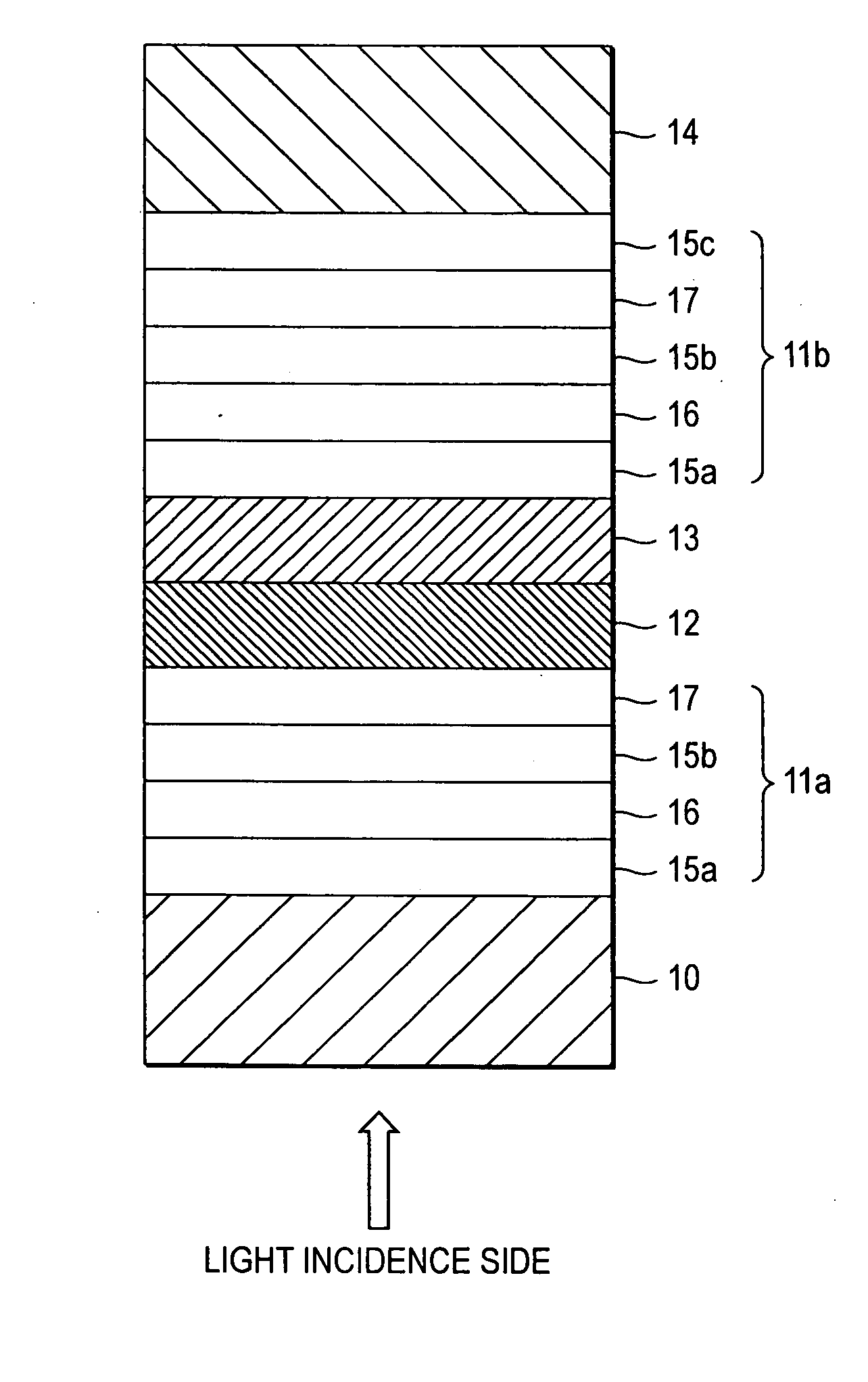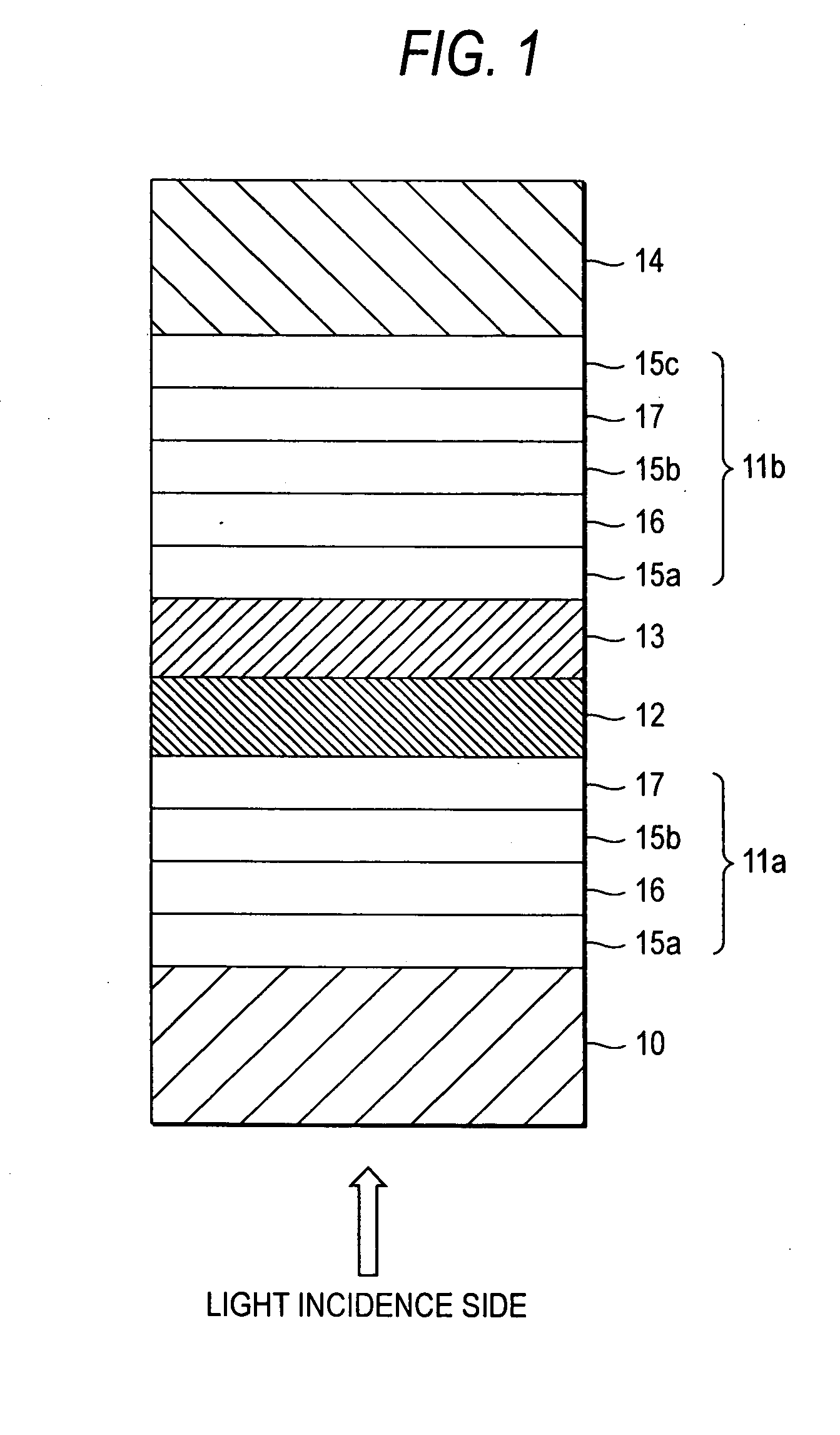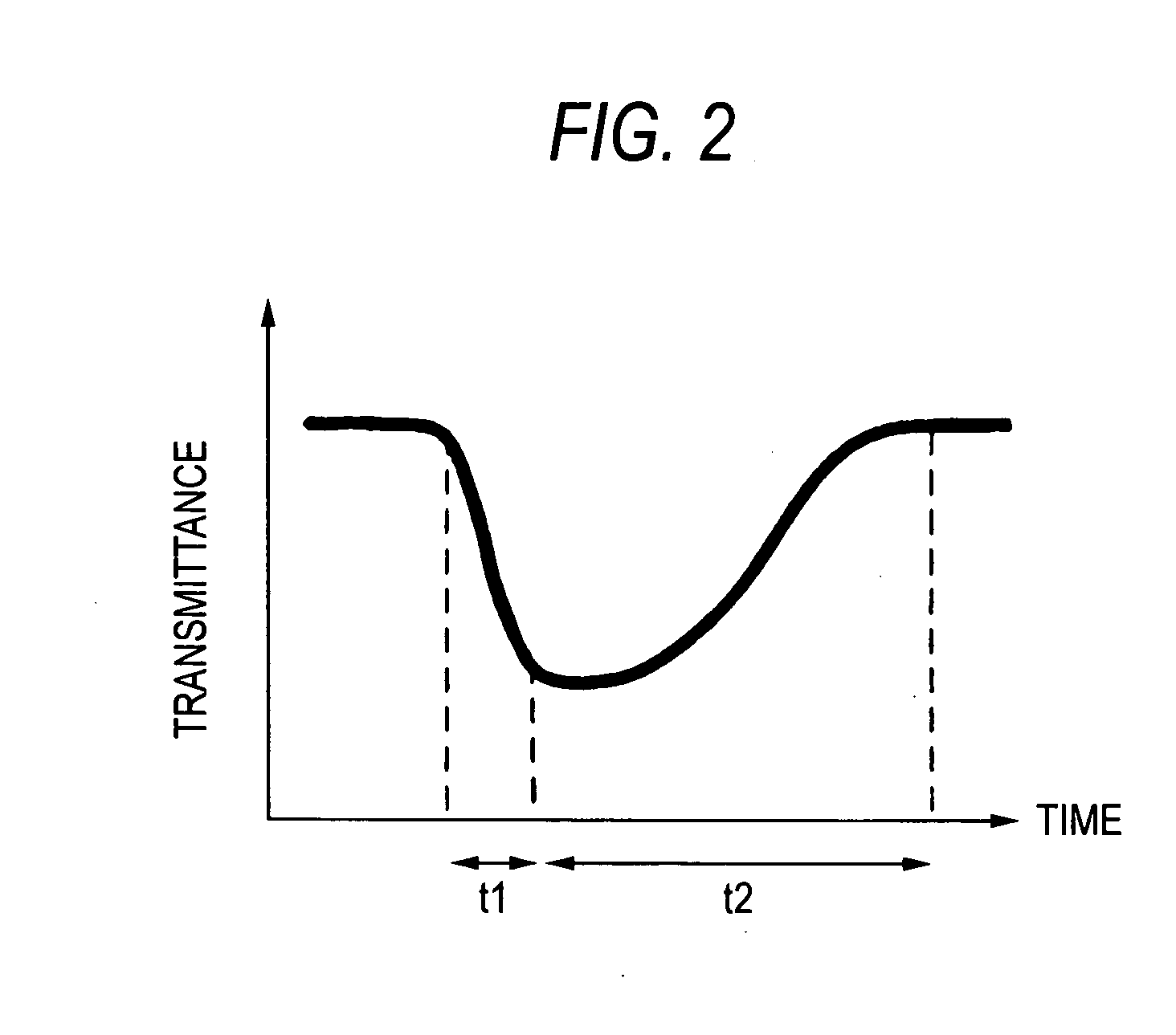Optical recording medium, method for reproducing information and optical information reproducing apparatus
- Summary
- Abstract
- Description
- Claims
- Application Information
AI Technical Summary
Benefits of technology
Problems solved by technology
Method used
Image
Examples
first embodiment
[0032] As shown in FIG. 1, an optical recording medium according to a first embodiment of the invention is formed as a single-side double-layer rewritable optical recording medium which includes a first substrate 10, a first information layer 11a, an absorption variation layer 12, an intermediate layer 13, a second information layer 11b and a second substrate 14 laminated successively when viewed from a light incidence side. The first information layer 11a has a protective layer 15a, a recording layer 16, a protective layer 15b and a reflection layer 17 laminated successively when viewed from the light incidence side. The second information layer 11b has a protective layer 15a, a recording layer 16, a protective layer 15b, a reflection layer 17 and a protective layer 15c laminated successively when viewed from the light incidence side.
[0033] The first substrate 10 is made of a material which is transparent to the wavelength of reproduction light so as not to disturb incidence of li...
example 1
Single-Side Double-Layer Rewritable Medium
[0055] After a 30 nm-thick ZnS—SiO2 film was formed as an optical interference layer 101a on a 0.6 mm-thick polycarbonate substrate (hereinafter referred to as “first substrate”) 100 having 50 nm-deep grooves arranged at intervals of a track pitch of 0.37 μm by RF magnetron sputtering with 1 kW, a 10 nm-thick Ge40Sb4Te52Bi4 film was formed as a recording layer 102 by RF magnetron sputtering with 0.2 kW. After a 10 nm-thick ZnS—SiO2 film was then formed as an optical interference layer 101b by RF magnetron sputtering with 1 kW, a 10 nm-thick Ag98Pd1Cu1 film was formed as a reflection layer 103 by DC magnetron sputtering with 1 kW. Thus, a first information layer 104 was formed on the first substrate 100.
[0056] Then, a 200 nm-thick film of ZnO which was a thermochromic material was formed as an absorption variation layer 105 on the first information layer 104 by RF magnetron sputtering with 1 kW.
[0057] On the other hand, after a 30 nm-thick...
example 2
Single-Side Double-Layer Rewritable Medium
[0060] A first information layer 104 was formed on a first substrate 100 by use of the same material and method as those in Example 1.
[0061] Then, a 100 nm-thick ZnSe film of a saturable absorption material with a forbidden band width of 2.8 eV (equivalent to 440 nm) was formed as an absorption variation layer 105 on the first substrate 104 by binary simultaneous RF magnetron sputtering of a ZnSe target and a SiO2 target in Ar gas with a substrate bias applied for controlling the particle size of ZnSe particles.
[0062] The absorption variation layer 105 formed thus was formed so that 50% by volume of ZnSe fine particles with a mean particle size of 5 nm were dispersed in SiO2. The forbidden band width was slightly widened because ZnSe was provided as fine particles, so that the forbidden band width became 3.1 eV equivalent to energy of light with 405 nm substantially equal to the wavelength of reproduction light. The rising time of the sat...
PUM
 Login to View More
Login to View More Abstract
Description
Claims
Application Information
 Login to View More
Login to View More - R&D
- Intellectual Property
- Life Sciences
- Materials
- Tech Scout
- Unparalleled Data Quality
- Higher Quality Content
- 60% Fewer Hallucinations
Browse by: Latest US Patents, China's latest patents, Technical Efficacy Thesaurus, Application Domain, Technology Topic, Popular Technical Reports.
© 2025 PatSnap. All rights reserved.Legal|Privacy policy|Modern Slavery Act Transparency Statement|Sitemap|About US| Contact US: help@patsnap.com



